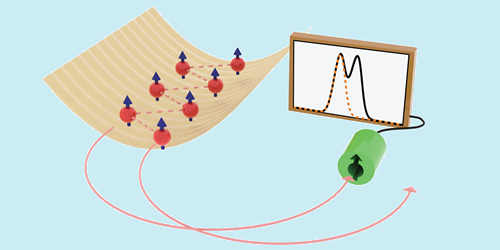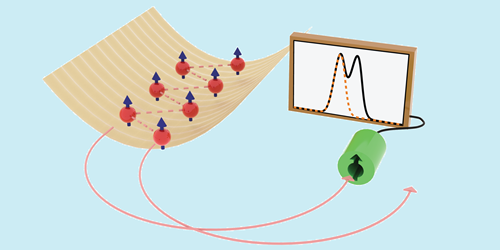Detection of a Zigzag Wigner Crystal
A Wigner crystal is a spatially ordered arrangement of electrons observed, so far, in certain 2D systems. The behavior is also expected in 1D, but a clear identification of a 1D Wigner crystal has proved elusive. A group of researchers has now observed a “zigzag” Wigner crystal, which is an intermediate case between a 1D and a 2D crystal. The researchers generated this crooked chain of electrons in a nanowire with tunable width. The measurements indicated that the electron spins were polarized, suggesting that zigzag Wigner crystals might have applications in spintronics.
Predicted in 1934, a Wigner crystal occurs in an electron gas whose dynamics are dominated by the Coulomb interaction between the electrons. Previous studies of nanowires have seen hints of 1D Wigner crystals, but the data were inconclusive, as other noncrystalline states can give similar signatures. Theorists recently showed that such a crystal could be obtained by weakening the confinement of electrons trapped in a 1D potential. As a result, the electrons could expand in a second dimension, forming a zigzag Wigner phase with unique spin properties.
In their experiments, Tse-Ming Chen from the National Cheng Kung University, Taiwan, and Michael Pepper from University College London and their colleagues used a nanowire whose effective width could be controlled electronically. At the end of the nanowire, a magnetic device focused electrons emitted from the nanowire onto a detector. When the researchers expanded the effective width of the nanowire, weakening the 1D confinement, the single peak observed at the detector turned into two peaks—an expected signature for a zigzag Wigner crystal. The team confirmed this interpretation by measuring the spins of the electrons, showing that they were polarized exactly as theoretical models predicted for such a Wigner crystal.
This research is published in Physical Review Letters.
–Michael Schirber
Michael Schirber is a Corresponding Editor for Physics based in Lyon, France.





